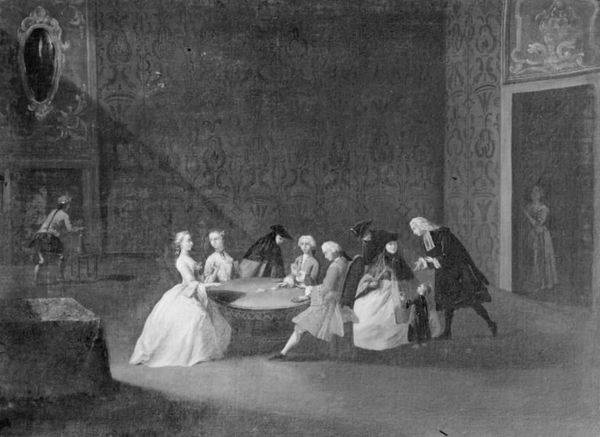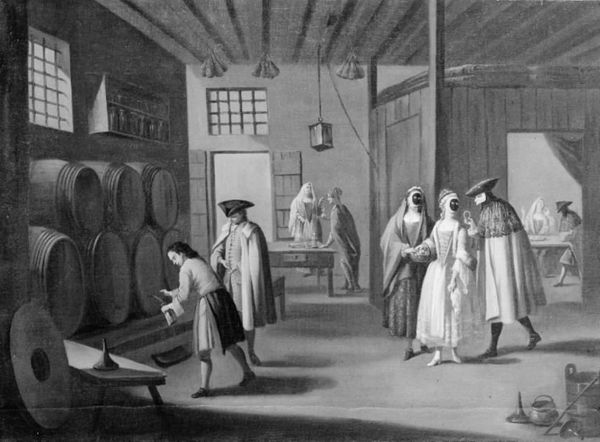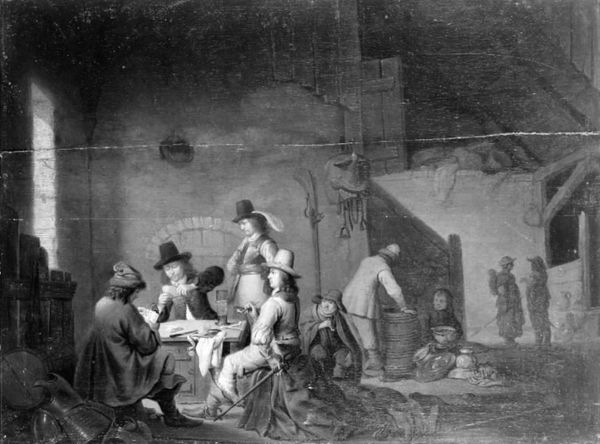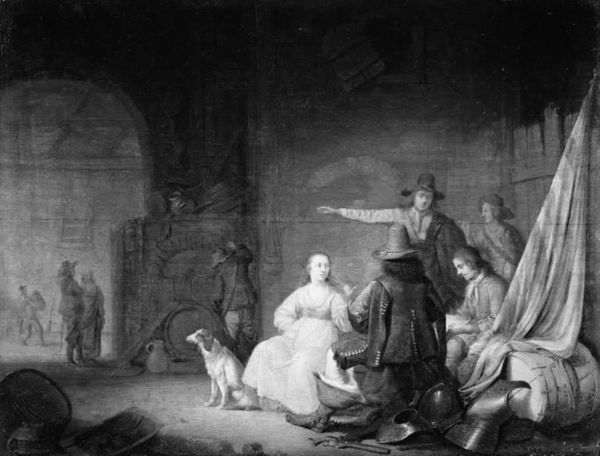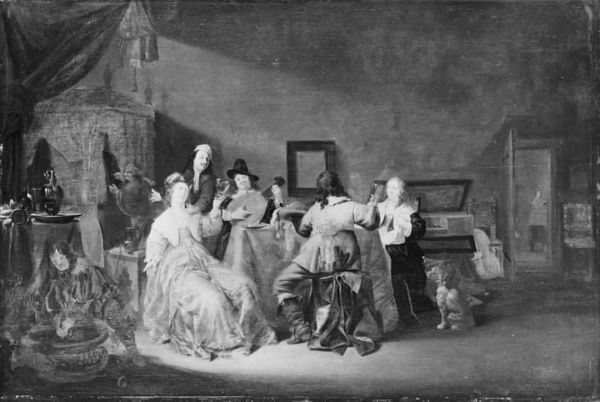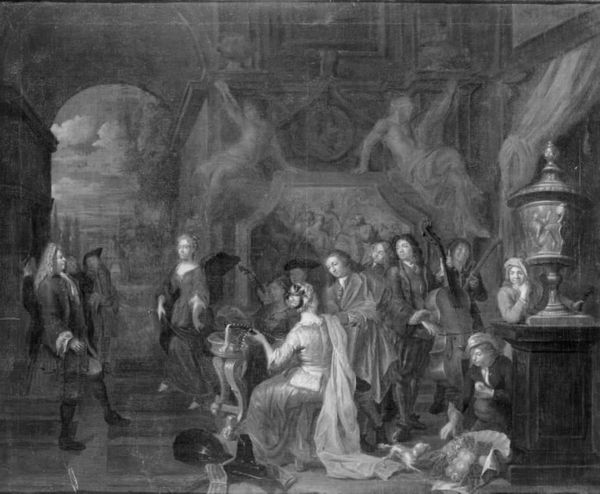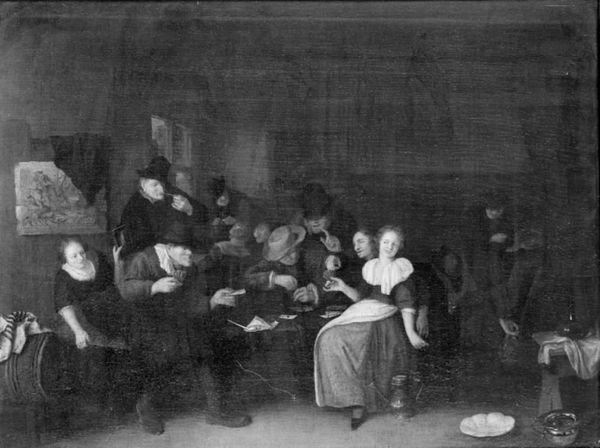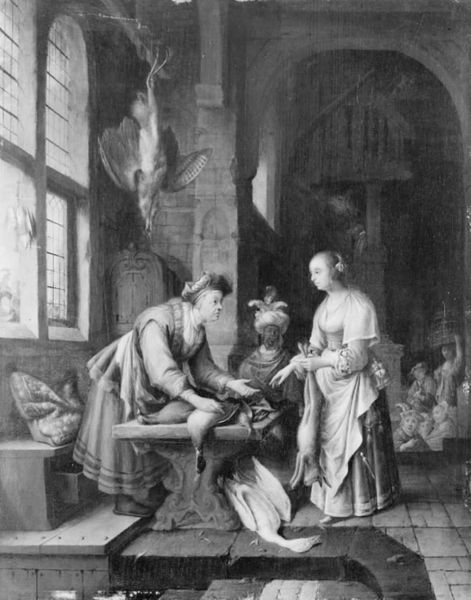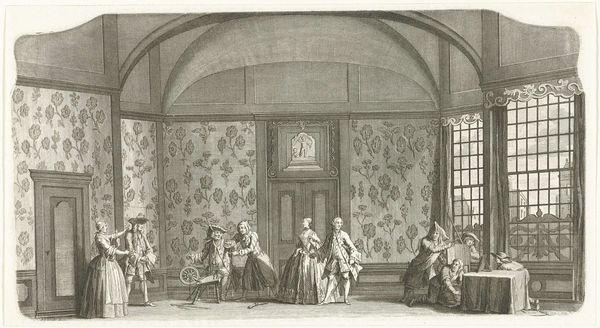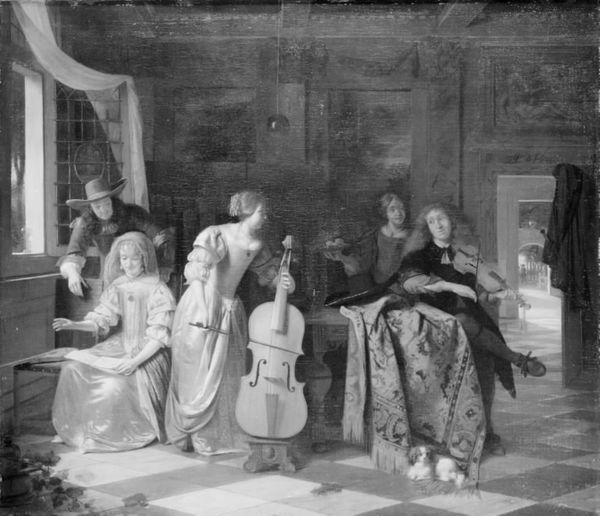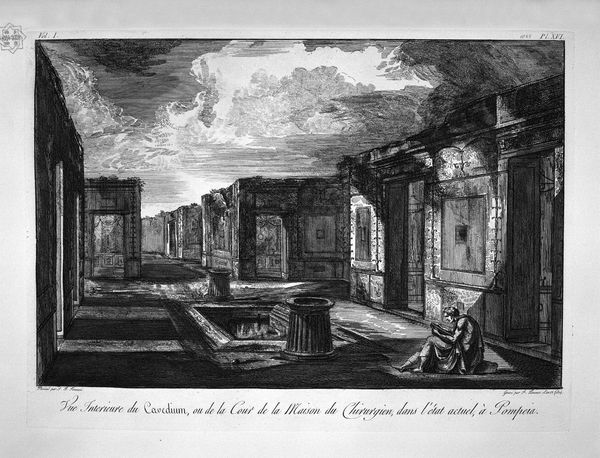
painting
#
baroque
#
painting
#
cityscape
#
genre-painting
Dimensions: 81 cm (height) x 110.3 cm (width) (Netto)
Curator: This painting, “Beggar in a Public House," likely created sometime between 1717 and 1785, invites us into a slice of 18th-century life. The artwork, held here at the SMK, showcases the Baroque style, and though its creator is anonymous, the canvas pulses with narrative energy. Editor: Immediately, what strikes me is the stark contrast. The composition is structured, almost architectural, yet filled with characters suggesting societal fracture. It feels like a stage set for a morality play. Curator: Yes, it does offer a theatrical feel. Note how the use of masks immediately sets the scene up to indicate roleplay of identities, possibly corruption in a society that values its appearance in a public house. What does this kind of disguise and stage-craft mean for the construction of our daily rituals and values? Editor: That duality really comes through, especially when you consider the dog—a common symbol of fidelity—trotting between the veiled figures and the beggar seated alone. Is the dog questioning them, showing the virtue that is often forsaken? The symbolism feels pointedly critical of the status quo. Curator: And beyond that overt symbolism, the architectural features contribute significantly. The arches frame each vignette—the masked figures, the drinking man, the council. The scene has very intentional organization and form, almost mimicking classical structures with careful and meticulous organization. Editor: It’s a complex commentary on societal structures and class dynamics. The public house becomes a microcosm of Venetian society. Curator: Absolutely. One might interpret the use of masquerade dress in the public sphere as an effort to blur social differences, only to underscore how they were also used to exacerbate existing hierarchies of power and privilege. The cityscape itself—in the little we can see beyond those arches—feels less an environment and more of a suggestion of artifice. Editor: Anonymity granted the powerful the ability to explore different levels of corruption that are possible under the confines of privilege. The composition implicates them, yes? What did being on stage mean for a Venetian audience that was experiencing a time of upheaval and political change? The artwork definitely is one of constant paradox. Curator: Indeed, and while we can only speculate as to the creator's exact motivations, "Beggar in a Public House" opens a valuable window onto a culture grappling with those very contradictions. Editor: Agreed. This small work leaves me contemplating how much of our public life is performance, and what those performances cost.
Comments
No comments
Be the first to comment and join the conversation on the ultimate creative platform.

